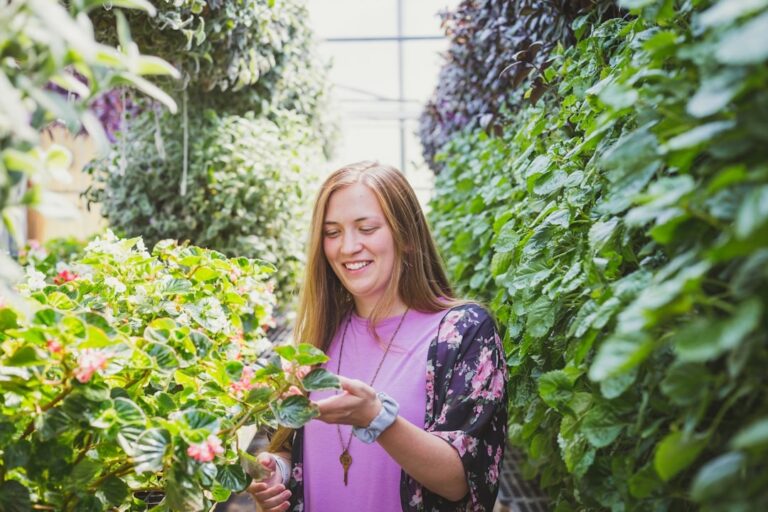10 Spring Garden Checklist For Lazy Gardeners
Spring is here, and for lazy gardeners, it’s time to prepare your garden the effortless way!
Forget endless weeding, watering, and exhausting crop rotations. With a few simple tricks, you can turn your garden beds into a thriving paradise that practically takes care of itself.
In this guide, we’ll cover spring tasks that make gardening not only easy but also enjoyable. Ready to embrace lazy gardening and watch your soil flourish?
Keep Your Soil Covered and Moist
The secret to lazy gardening lies in never leaving your soil exposed.
When soil is uncovered, the sun bakes it, evaporating moisture and compacting it into an inhospitable wasteland.
By covering the soil with mulch or organic matter, you can protect it from heat, conserve water, and encourage microbial growth. It’s one simple step that transforms your garden into a fertile oasis with less effort.
Reuse Last Year’s Garden Pathways
Lazy gardeners know the value of working with what they’ve already got. Spring is the perfect time to rake last year’s pathways into your garden beds.
This adds organic matter to the soil, making your beds taller every year. Not only does this save time and effort, but it also reduces the need to bend over; a welcome relief as we grow older.
After preparing your garden beds, add a fresh layer of cardboard to the pathways. Cardboard enhances water retention, breaks down underlying layers, and stimulates microbial activity.
Cover the cardboard with free wood chips from a local arborist or services like ChipDrop.com. These wood chips act as sponges, slowly releasing water into the soil while reducing flooding and runoff during heavy rains.
Rethink Composting
Composting is essential for improving soil health, but many gardeners misunderstand it. It’s not just about throwing organic waste into a pile; composting requires the right balance of materials to maximize yield.
Rich, well-balanced compost can work wonders for your garden, but you don’t need a massive quantity. A thin layer of about an inch is often more than enough to amend your beds.
When adding compost, rake back your mulch to make room for the new layer. This ensures that tiny seedlings won’t struggle to push through the soil while still retaining moisture.
Harness the Power of Mushrooms
Mycelium, or the fungal network beneath the soil, is one of the lazy gardener’s best tools.
These “baby mushrooms” break down organic material, creating tiny pathways in the soil that improve aeration and microbial activity. By intentionally introducing mushroom spawn, such as wine cap mushrooms, you can kickstart this process.
As a bonus, wine cap mushrooms are edible and packed with nutrients.
Planting mushroom spawn along with decomposing wood chips ensures both better soil health and a delicious harvest. Mycelium naturally shows up when organic materials decompose, but adding mushroom spores accelerates the benefits throughout the gardening season.
The Importance of Interplanting
Diversity is key to a lazy garden’s success. Traditional farming often relies on monocrops, but a mixture of species encourages biodiversity and improves soil health.
Interplant crops like garlic and onions with your other plants. They’re naturally pest-resistant and enhance the flavor of your produce. Their strong scent even repels rodents, making them an invaluable addition to any garden.
When preparing your beds, let plants go to seed at the end of the season. Scatter the seeds across your garden to create free seedlings. Planting these young sprouts doesn’t need to be precise. Just stick them in the soil and hope for the best!
Prepare for Cool-Season Crops
Spring is a deceptive season, often presenting sunny days before the weather turns cold again.
Lazy gardeners know not to plant too early. It’s better to wait until conditions are truly right. Cool-season crops like lettuce, kale, chard, cilantro, and spinach thrive when temperatures are moderate.
Instead of worrying about individual seeds, sprinkle them across the soil, cover them with compost, and let nature do the work.
Avoid planting tomatoes or other warm-season crops during early spring. While it may be tempting to get a head start, cold temperatures stunt their growth. Waiting ensures healthier plants and better yields in the long run.
Keep It Simple
Lazy gardening is all about simplicity. Whether it’s repurposing old items as compost screeners or using free materials like wood chips, it’s possible to create a productive garden without spending a fortune.
Multiple crops growing together reduce the need for chemical fertilizers and pest repellents, while diverse root systems improve soil fertility naturally.
By covering your beds with compost and mulch, letting seedlings emerge, and delaying planting for optimal conditions, you can embrace the art of lazy gardening.
Gardening doesn’t have to be hard, sometimes, the simplest solutions are the most effective.




